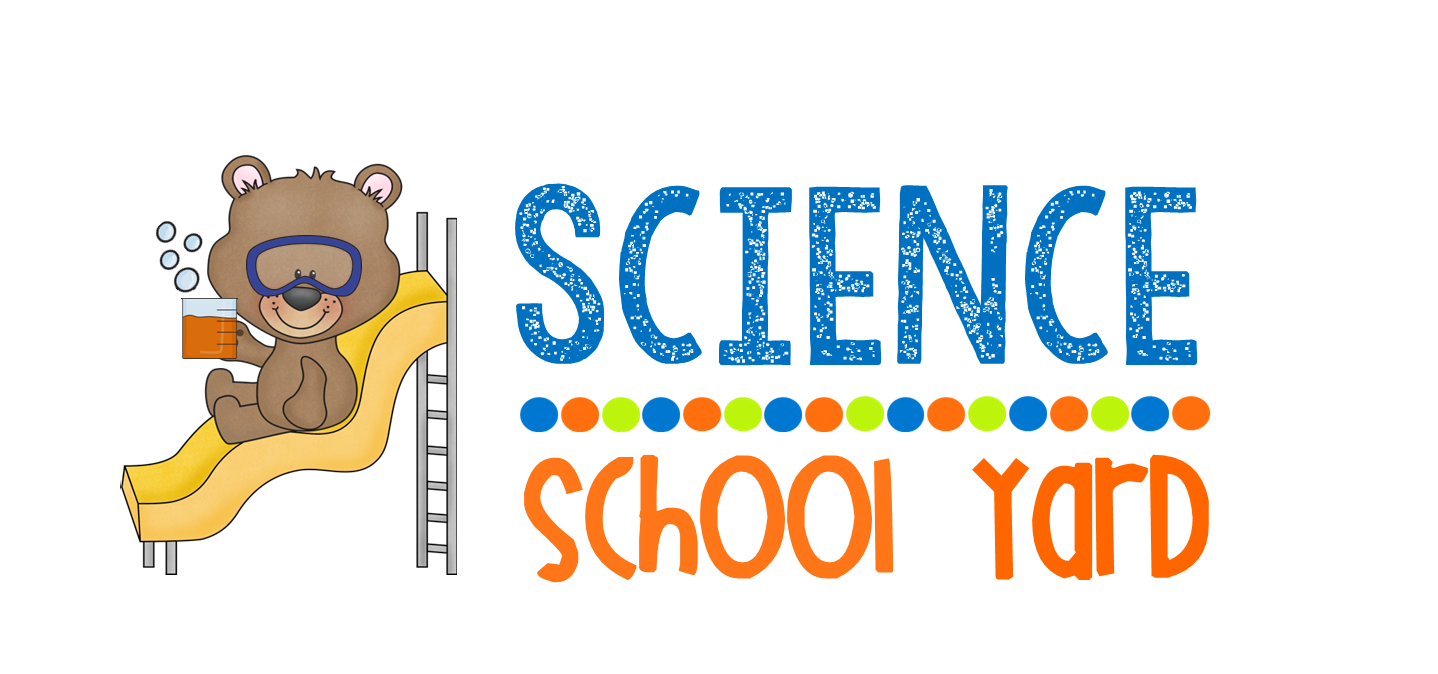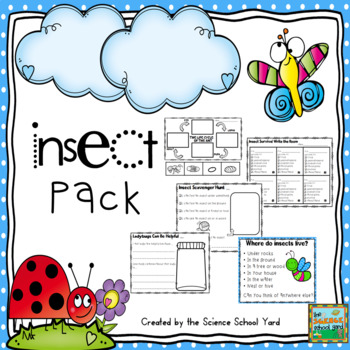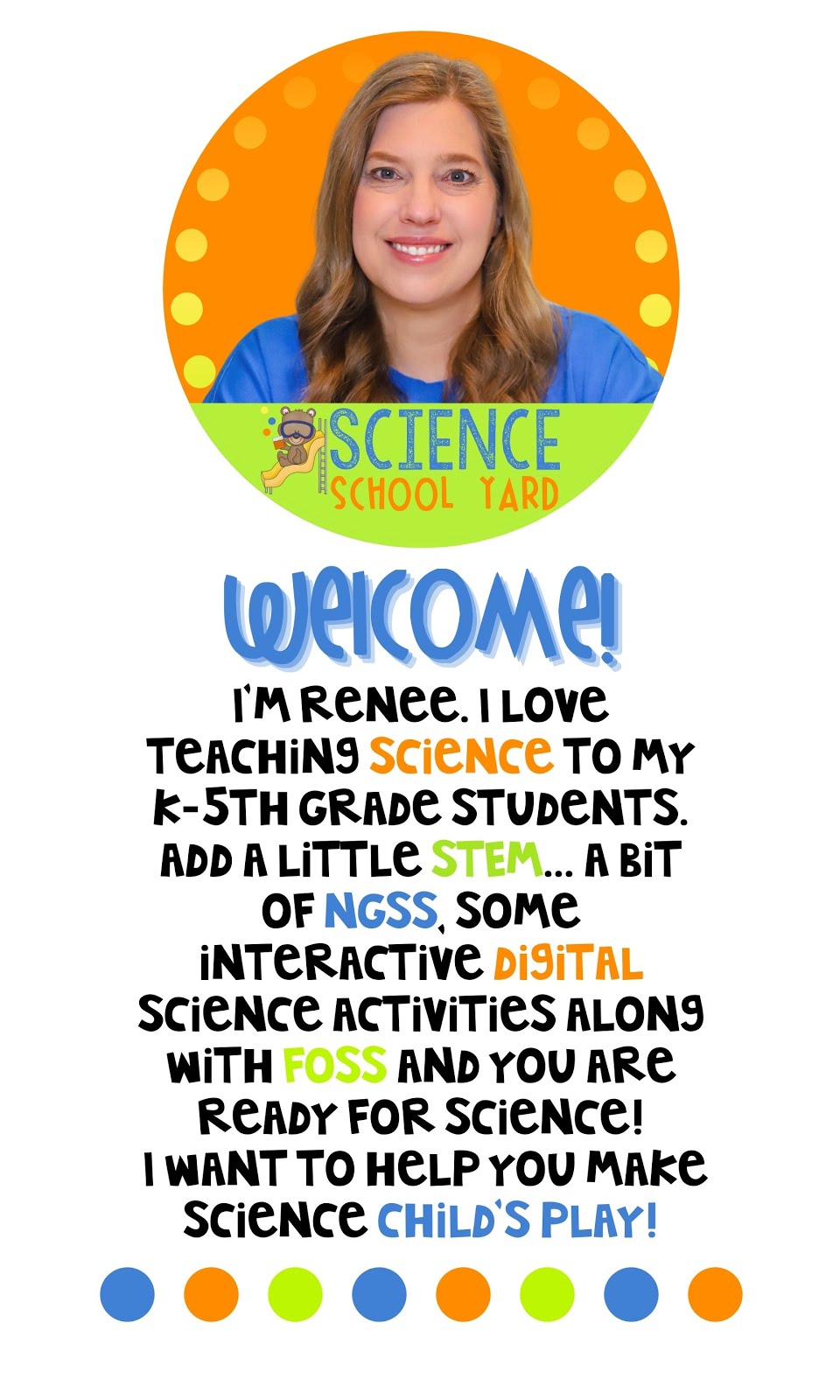If you are just joining me, welcome to the Science School Yard. I have been teaching for 27 years. For the last 7 years, I have been teaching Science and STEM to K-5th grade students here in central Wisconsin. Our district uses FOSS to guide our road map and lessons, however adding STEM has always been important for me because of the amazing benefits that I see in terms of thinking differently as well as growth mindset! Last year, we adopted the WI Science standards that are almost identical to NGSS. This change comes after having to use standards that were developed in 1994.

When something new comes my way, I try to look for ways to learn all I can to be able to be the best science educator I can be. This year's focus was on learning the 5 E method of planning my science lessons. I watched countless videos, read a ton of articles, and even did some professional development classes to really get a grasp of this student centered approach to planning my science lessons. The 5E Model of Instruction was exactly what I needed to help me learn a more inquiry-based learning method. Let me help explain what I learned!
What is the 5E Method?
In the 5E Method of Instruction there are 5 key components that help the teacher guide and facilitate a lesson, starting with the foundation ending with assessment. The role of the teacher and student work in tandem. The teacher's job is to facilitate by eliciting responses that allow students to use their background knowledge to learn a new concept. By posing questions, observing and listening to student responses the teacher is also able to ask inquiry-based questions that will not only generate curiosity, but also interest. Following the lesson format allows for deeper understanding of key concepts because you are engaging students in a systematic activity based approach.
The 5E's
Engage: During the first part of the lesson, students are introduced to the concept. This is a perfect opportunity to motivate learners and create interest!
Teachers ask questions and engage them in making connections and helping generate prior knowledge making the connections between past and present which leads to a new learning experience. Teachers take note of any misconceptions, but at this time are not corrected. It is the framework for the new concept they are learning.
Explore: It is time to discover new skills, probe, inquire, and even examine their thinking. As teachers generate interest, students now explore the new concept that was presented.
Investigations and experiments are explored by the students at this time. Probing questions are asked so that students can make observations and collect data.
This can be done in small teams for as a large group. As the team creates a hypothesis, they start to use the scientific method to use inquiry based questioning. Answers may not yet me established. Our role is to not provide answers yet, but to guide.
Explain: During the explanation stage, the teacher now asks probing questions that will help encourage the students to find patterns from the data they collected and start to verbalize their understanding of the new concepts. They also put together what the vocabulary means. Students use their words to explain what they observed again either in a small or whole group.
This phase allows for students to connect their prior knowledge to their new discoveries through explaining what they now know or observed.
Elaborate: In the elaboration phase of learning, students start to make connections and apply what they learned to the world around them. As teachers, we provide them with ways to apply their knowledge so that their is a deeper understanding. We can do that through STEM connections, other experiments that extend what they already learned, or do research to explore more on the topic.
As they gather new data they can start to draw new conclusions as they share what they learned through writing and connecting with others. This step is where they learn about the world around them and get a deeper understanding and skill set.
Evaluate: This is such an important phase because it is an opportunity to evaluate learning. Students prove their own learning by writing, conversing, or demonstrating what knowledge they acquired through the 5E process.
Students can not only demonstrate their learning, but they can pose new questions, and even through formative(ongoing and dynamic) and summative (end of lesson final test or product) assessments show what they know. This is a way for students to self assess, peer assess or be evaluated by their teacher. I love to see evidence of accomplishment as they demonstrate what they now know. Not all of my students make huge gains in understanding, however where they started and where they are at the end is much more substantial now that I use the 5E method.
Now that I am the facilitator to their learning, it allows for larger growth in accountability for all students to learn and take part in that learning!
I made these 5E posters that I hang in my classroom. It helps me remember my role and it really helps my students know the process that they will be taking during a science lesson!
If you would like a
free copy you can find them here! If you haven't already signed up for my newsletter, it is a great opportunity to grab more free resources in my member's only free resource library!
I will be continuing to share what I learn and implement along that way. It is certainly easier to adapt and find ways to integrate something new in what you are already doing when someone tests it out for you! Try the 5E model as you plan your next science lesson. Watch for the next blog post...
the 5 E lesson plan for your next free resource!






















































